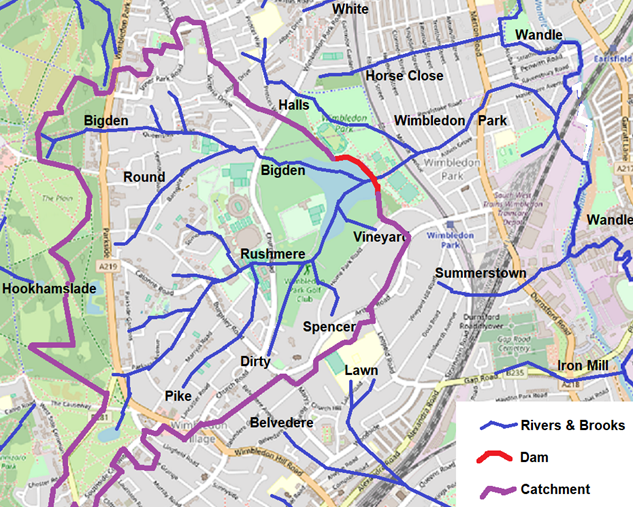Wimbledon Park Lake
The heart of Wimbledon Park
Created in the 1760s by Capability Brown, it is a home for nature, an important location for watersports and a focal point for visitors who enjoy the fine views.

The 9ha lake is owned by LB Merton. The lakeside offers a rich and diverse natural landscape that requires protection and enhancement with restored wet woodland, wetland and marginal vegetation. There are also important heritage woodlands, particularly Horse Close and Ashen Grove Woods that require conservation and several ancient parkland oaks, that must be protected. The trees, wetlands and lake provide important habitat for a diversity of wildlife, including bats, birds, fish, invertebrates, and the European eel and this should be enhanced, not harmed, in any developments.
The edge of the lake provides the most diverse wildlife habitat in the heritage park. It is a place for protecting important wildlife habitats and priority species and improving access to nature. Public access currently restricted to the dam promenade in the public park and there is, as a result, a poor perception by the public of the rich habitats on two thirds of the lake perimeter, except perhaps by more privileged anglers and golf players.
Our plans for a revitalised lake
With the discontinuation of the golf course, public access on a new public path around the lake would therefore be very welcome but it presents a challenge if the lakeside habitats are to be protected and enhanced. This is because it is impossibly narrow in places. It would therefore be incumbent on the three landowners to prioritise the protection of important habitats and adopt a flexible approach to the siting of any new public access path. Ideally the path should be designed to have generous setbacks from the lake edge, approaching the water’s edge only in limited locations for important views.
The unsightly 1970s sailing club with its storage yard and the sports dome and tennis shed at the Wimbledon Club are too prominent at the lakeside. The underused and neglected sports stadium with its linear coniferous tree screen planting dominate the public park. Any athletics provision should be redesigned to fit much better into the landscape. The Wimbledon Club and Golf Club maintenance facilities are also too close to the lakeside.
The catchment and management of Wimbledon Park lake
The lake is fed by streams that flow down from Wimbledon Common. Overflow from the lake runs into a stream that eventually flows into the River Wandle and thence into the River Thames.
With raised lake levels in recent years, resulting in a higher water table, poorer drainage and more flooding at the peripheries, the management of the lake margin requires monitoring. It is also more essential than ever to limit the migration of silt into the lake and mitigate the inflow of nutrients through wet woodland and reed beds. Most silt should be intercepted with silt traps where the brooks enter the heritage land. This may be combined with the careful design of the deculverted brooks.
